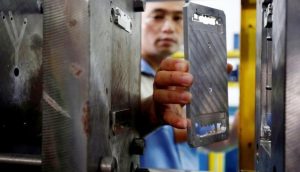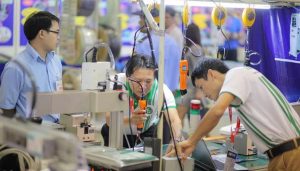
Airpods is currently the world’s highest-selling wireless headset, and it is also one of Apple’s “explosive” products, occupying nearly 60% of the market share; and according to data from the survey agency Counterpoint, including other wireless headset brands, Shipments will soar from 48 million pairs in 2018 to 129 million pairs in 2020. The “Nikkei Asian Review” pointed out that this strong growth situation has given Apple the opportunity to accelerate the diversification of production areas without reducing production.
U.S. giants may trial production in Vietnam, many U.S. companies fall into hesitation: reluctant to Chinese market.

However, due to Vietnam’s relatively good geographical location and lower cost advantages, Apple has frequently shifted its focus to Vietnam recently. Japanese media pointed out that Apple is planning to transfer 15% -30% of the company’s hardware capacity to Southeast Asian countries, and is evaluating the possible cost impact. At the same time, the impact of this production line transfer to the entire supply chain is also expected. Will appear in 2 to 3 years.
Vietnam’s production disadvantages stand out
Vietnam’s presence in the face of Apple has become stronger and stronger, but can the former really provide Apple with an irreplaceable supply chain? According to the Vietnam People’s Daily, Vietnamese companies currently only participate in processing and assembly business, especially small and medium-sized enterprises currently only 25% of them participate in the global supply chain, while in other countries, the number is 46%, which also leads to the country’s added value of processing At a lower level. In other words, Apple will transfer some hardware capacity to Southeast Asian countries such as Vietnam, which may not be able to “load”.

On the other hand, Hong Kong’s “South China Morning Post” reported earlier this month that many Chinese and foreign companies are currently moving factories to Southeast Asia, but in fact, the business environment in Southeast Asia is becoming more complicated, especially when many foreign investors are currently in Vietnam. Waiting countries encountered various difficulties in investment. The report bluntly said: The economies and markets of Southeast Asian countries are small, but the corresponding risks are not small.
For example, Vietnam ’s labor costs are constantly rising. At present, the monthly salary of local workers has risen to US $ 140-US $ 180, which is more than ten times that of a decade ago. In addition, the working efficiency of Vietnamese workers is not greater than that of Chinese workers. Gap, which causes companies to incur additional time costs. Therefore, according to foreign media reports, many American companies relocating to Southeast Asian countries have “regretted” and are planning to withdraw from the area. Some US companies have even stated that they “will not be willing to accept the Chinese market.”
